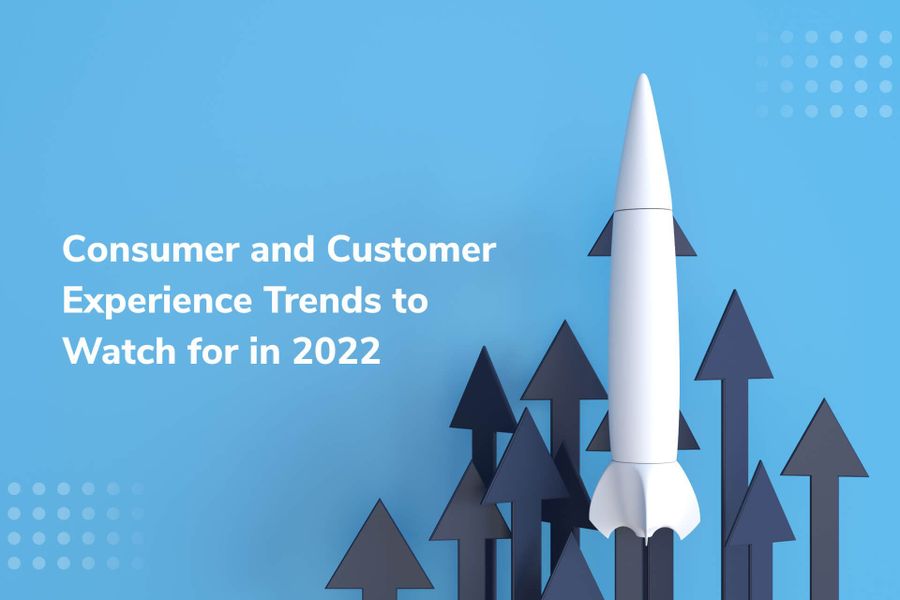2021 has been a year of sweeping changes that have rocked the entire app and digital marketing ecosystem, affecting companies across the board.
After reflecting on the waves of disruption that have crashed over our space in 2021, we’ve put together a list of key trends to expect in 2022.
Trend #1: The Importance of Omnichannel
Now more than ever, customers are placing value on a seamless and satisfying omnichannel customer experience.
Consumers are now used to engaging with products and services across many channels and devices, from mobile apps to mobile and desktop web browsers to Smart TVs to SMS, and more. Rising customer expectations have pushed businesses to invest more heavily in creating consistent cross-channel experiences.
Large players such as Amazon have set a high bar for these high-touch, personalized omnichannel communications and consumers now expect smaller businesses to measure up to this standard. For instance, a customer might place a whole food grocery order via the Amazon website, receive an order update via push notification or in-app message, and receive a digital transaction receipt via email. When the user experience spans multiple channels, it needs to be cohesive.
Thanks to the rise in food delivery apps during the pandemic, real-time delivery updates are now the status quo. Whether you're delivering a hard good or a food item, users want to track the progression of their orders from start to finish, receiving the appropriate updates across channels.
Unified Management of Businesses
To support this shift towards omnichannel user experiences, businesses must also become more unified and less siloed in the way they operate. Facilitating collaboration between product, marketing, and engineering will be more critical than ever in order to create the unified and polished experience customers crave. That principle also extends to business technology — to succeed, companies will need a more unified tech stack that provides ample integrations and data sharing possibilities.
Trend #2: The Death of Personalized Advertising
In the past decade, identifying unique users across mobile apps and websites has laid the foundation for personalized advertising. Today, regulators and platforms are quickly putting an end to these capabilities.
With the newest iOS changes, Apple is making it difficult to collect IDFA and requiring users to consent to other forms of tracking. In parallel, Google is getting rid of third-party cookies as a tracking mechanism.
As a result, we expect to see the following:
- Increased advertising costs
- Increased company acquistions and consolidations of businesses that depend on advertising
- Increased focus on user retention and Lifetime Value (LTV)
Trend #3: The Rise of Subscription Models
With less access to third-party data, subscription business models will continue to grow in popularity. Rather than acquiring as many users as possible via advertising, businesses are now being forced to think about how they can retain existing customers and increase their lifetime value (LTV) in order to achieve reliable business growth.
As a result, companies will downsize their ad spend and supersize their product development efforts, which is excellent news for consumers. Before, mobile-first companies poured large portions of their budgets into their ad spend. Now, personalized product experiences are taking center stage.
Retaining users within a subscription-based model means investing heavily in the customer experience and enhancing your app features and value over time. In this new landscape, businesses will also interact with a fewer number of users, so delivering meaningful, personalized experiences will be paramount.
As a result of these changes, expect to see...
- Zero-party and first-party data are now increasingly important as the internet becomes more privacy-focused.
- Subscription-based app monetization models will become the new standard in the mobile app ecosystem and this shift has a series of trickle-down effects.
- Increased consolidation of businesses
- Increased bundling of products and services
- Increased influence of word of mouth and viral growth to spur app growth
Trend #4: Digitization of Customer Interactions, Mobile-First Growth, and the Explosion of Key App Categories
Increased Digital Customer Interactions
The past year has spurred rapid-fire adoption of digital customer and supply chain interactions.
A global survey of C-suite executives across industries and company sizes revealed that the share of digital or digitally enabled products in companies’ portfolios has accelerated by a shocking seven years, and respondents were three times likelier than before the crisis to say that at least 80 percent of their customer interactions are digital in nature.
These leaps in digitization contribute to the growing importance of apps and omnichannel experiences.
Mobile-First Growth & App Category Growth
In 2021, consumers have increasingly used apps to stream content, collaborate with coworkers, stay in touch with family and friends, game, date, and socialize. Not surprisingly, global consumer spending in apps grew to $133 billion, up by almost 20 percent year-over-year (YoY). Other recent reports reveal that new app downloads grew by almost eight percent and daily time spent in apps grew over 20 percent in 2021. The end result? Consumers spent 8 percent more time on their mobile devices than they did watching live TV in 2021, which is a startling statistic considering shelter-in-place mandates.
The mobile gaming, finance, mobile shopping, and mobile food delivery sectors saw impressive growth. Other strong categories included business apps, outdoor exploration and micro-mobility apps, at-home exercise, and eBook apps. We expect this growth to continue into 2022.
Trend #5: Real-Time Everything
This year, we’ve seen rapid increases in computer processing speed, software reliability, and network technologies. Real-time customer experiences are not just appreciated — they’re expected. In the messaging space, that means that users expect to receive highly relevant and personal communications from brands at exactly the right moment.
In addition, users interact with most applications as a result of receiving notifications. They now expect to receive proactive communication and updates rather than seeking out information or interactions with your brand. Receiving real-time updates, content, and deals is now a precedent — one that every brand will need to meet in order to compete for users' attention and loyalty.
Trend #6: Increased Tech Literacy
Over the course of the past two years, individuals across every age group have stepped up their tech literacy. Not only that, but consumers across generations are spending more time on their mobile devices. Over the course of 2021, Gen Z, Millennials, and GenX/Baby Boomers spent 16, 18, and 30 percent more time YoY on their most-used apps.
Tech-savvy users are now more likely to source online reviews and see through gimmicks that waste their time and money. As a result, clear user experiences and world-class customer support are even more critical for businesses in order to stand out in their target markets.
More "Lessons Learned" from 2021
In addition to changing the digital landscape, 2021 changed the way that brands communicate with their customers. Learn what's changed and what communication principles matter most by reading: 3 Customer Communication Lessons from the COVID-19 Pandemic.
Create a Scalable Communication Strategy with OneSignal
Now more than ever before, your messaging platform can directly impact your ability to grow and fulfill user expectations. OneSignal is designed to help you send notifications and seamlessly manage your user communication across every channel, including mobile push notifications, web push notifications, bulk SMS, in-app messaging, and email. Our platform is quick to set up and makes it easy to automate and customize messages at scale — without doing any development work. If you don't have a OneSignal account, you can create one for free and start sending push notifications to your users today. Don't take our word for it — simply sign up and see for yourself!
Create a Free Account



